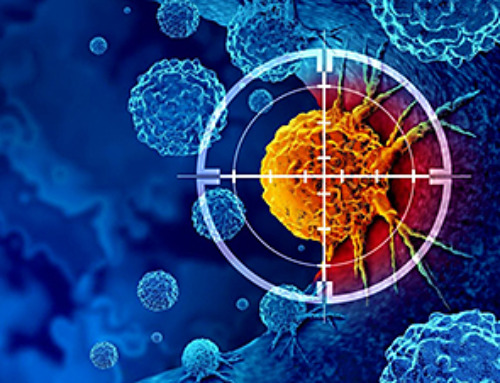A new ultrasound-guided nanotherapy wipes out liver tumors while training the immune system to keep them from coming back.
The study, published in Nano Today, introduces a biodegradable nanoparticle system that combines sonodynamic therapy and cell death induction (ferroptosis) to treat hepatocellular carcinoma, the most common type of liver cancer.
The platform uses ultrasound-triggered generation of reactive oxygen species and controlled release of the blood thinner warfarin to trigger cancer cell death and stimulate anti-tumor immunity.
Hepatocellular carcinoma is one of the most challenging types of liver cancer to treat due to poor immune responsiveness and high recurrence.
While ferroptosis inducement, an iron-dependent form of regulated cell death, has shown promise, its standalone effectiveness is limited.
The study’s strategy enhances ferroptosis by combining ultrasound-activated reactive oxygen species with warfarin, an inhibitor of VKORC1L1, a key enzyme that helps cells neutralize oxidative damage.
Nanoplatform Design and Mechanism
Researchers synthesized a pseudo-conjugated sonodynamic polymer (BSD) via a Palladium-catalyzed coupling method.
This polymer was co-assembled with warfarin and DSPE-PEG2000 to form NP-BSD@WFR, a nanoparticle featuring a biodegradable core and a PEG shell, which promotes stability and passive tumor targeting via the enhanced permeability and retention (EPR) effect.
Upon ultrasound exposure, the nanoparticles disintegrate rapidly, releasing both ROS and warfarin in the tumor microenvironment. This dual action both damages cancer cells and disrupts their antioxidant defenses, tipping the balance toward ferroptotic cell death.
Killing Liver Cancer Cells Through ROS and Ferroptosis
Tests in hepatocellular carcinoma cell lines (HUH-7, HepG2, H22) showed that NP-BSD@WFR was efficiently taken up and, when activated by ultrasound, generated substantial ROS.
This led to glutathione (GSH) depletion, downregulation of glutathione peroxidase 4 (GPX4), and accumulation of lipid peroxides, all key hallmarks of ferroptosis.
Compared to controls, cells treated with NP-BSD@WFR plus ultrasound exhibited significantly higher apoptosis and reduced colony formation. 3D tumor spheroid models confirmed this enhanced cytotoxicity.
Tumor Targeting and Immune Activation
In a subcutaneous hepatocellular carcinoma mouse model, NP-BSD@WFR showed strong tumor accumulation due to the EPR effect.
Upon systemic administration and ultrasound activation, the treatment achieved 92 % tumor inhibition over 12 days, with no significant weight loss or visible organ toxicity.
Importantly, the therapy induced immunogenic cell death, evidenced by:
- Increased dendritic cell (DC) maturation
- Elevated levels of CD8+ T cell infiltration
- Enhanced systemic T cell activation in spleens and lymph nodes
These findings suggest that, as well as attacking tumor cells directly, the platform also primes the immune system to recognize and attack cancer.
A Future in Liver Cancer Treatment
This study demonstrates a promising approach to treating liver cancer by combining sonodynamic therapy with ferroptosis amplification and immune stimulation.
The biodegradable design, targeted activation, and robust immune engagement make NP-BSD@WFR a strong candidate for further development.
While the results are encouraging, further studies will be necessary to assess long-term safety, refine dosing, and investigate efficacy in other tumor types.
Journal Reference
Wang P., et al. (2025). Nanoplatform for ferroptosis-based liver cancer therapy via sonodynamic activation and immune response. Nano Today, 66, 102891. DOI: 10.1016/j.nantod.2025.102891
News
Ultrasound-activated Nanoparticles Kill Liver Cancer and Activate Immune System
A new ultrasound-guided nanotherapy wipes out liver tumors while training the immune system to keep them from coming back. The study, published in Nano Today, introduces a biodegradable nanoparticle system that combines sonodynamic therapy and cell [...]
Magnetic nanoparticles that successfully navigate complex blood vessels may be ready for clinical trials
Every year, 12 million people worldwide suffer a stroke; many die or are permanently impaired. Currently, drugs are administered to dissolve the thrombus that blocks the blood vessel. These drugs spread throughout the entire [...]
Reviving Exhausted T Cells Sparks Powerful Cancer Tumor Elimination
Scientists have discovered how tumors secretly drain the energy from T cells—the immune system’s main cancer fighters—and how blocking that process can bring them back to life. The team found that cancer cells use [...]
Very low LDL-cholesterol correlates to fewer heart problems after stroke
Brigham and Women's Hospital's TIMI Study Group reports that in patients with prior ischemic stroke, very low achieved LDL-cholesterol correlated with fewer major adverse cardiovascular events and fewer recurrent strokes, without an apparent increase [...]
“Great Unified Microscope” Reveals Hidden Micro and Nano Worlds Inside Living Cells
University of Tokyo researchers have created a powerful new microscope that captures both forward- and back-scattered light at once, letting scientists see everything from large cell structures to tiny nanoscale particles in a single shot. Researchers [...]
Breakthrough Alzheimer’s Drug Has a Hidden Problem
Researchers in Japan found that although the Alzheimer’s drug lecanemab successfully removes amyloid plaques from the brain, it does not restore the brain’s waste-clearing system within the first few months of treatment. The study suggests that [...]
Concerning New Research Reveals Colon Cancer Is Skyrocketing in Adults Under 50
Colorectal cancer is striking younger adults at alarming rates, driven by lifestyle and genetic factors. Colorectal cancer (CRC) develops when abnormal cells grow uncontrollably in the colon or rectum, forming tumors that can eventually [...]
Scientists Discover a Natural, Non-Addictive Way To Block Pain That Could Replace Opioids
Scientists have discovered that the body can naturally dull pain through its own localized “benzodiazepine-like” peptides. A groundbreaking study led by a University of Leeds scientist has unveiled new insights into how the body manages pain, [...]
GLP-1 Drugs Like Ozempic Work, but New Research Reveals a Major Catch
Three new Cochrane reviews find evidence that GLP-1 drugs lead to clinically meaningful weight loss, though industry-funded studies raise concerns. Three new reviews from Cochrane have found that GLP-1 medications can lead to significant [...]
How a Palm-Sized Laser Could Change Medicine and Manufacturing
Researchers have developed an innovative and versatile system designed for a new generation of short-pulse lasers. Lasers that produce extremely short bursts of light are known for their remarkable precision, making them indispensable tools [...]
New nanoparticles stimulate the immune system to attack ovarian tumors
Cancer immunotherapy, which uses drugs that stimulate the body’s immune cells to attack tumors, is a promising approach to treating many types of cancer. However, it doesn’t work well for some tumors, including ovarian [...]
New Drug Kills Cancer 20,000x More Effectively With No Detectable Side Effects
By restructuring a common chemotherapy drug, scientists increased its potency by 20,000 times. In a significant step forward for cancer therapy, researchers at Northwestern University have redesigned the molecular structure of a well-known chemotherapy drug, greatly [...]
Lipid nanoparticles discovered that can deliver mRNA directly into heart muscle cells
Cardiovascular disease continues to be the leading cause of death worldwide. But advances in heart-failure therapeutics have stalled, largely due to the difficulty of delivering treatments at the cellular level. Now, a UC Berkeley-led [...]
The basic mechanisms of visual attention emerged over 500 million years ago, study suggests
The brain does not need its sophisticated cortex to interpret the visual world. A new study published in PLOS Biology demonstrates that a much older structure, the superior colliculus, contains the necessary circuitry to perform the [...]
AI Is Overheating. This New Technology Could Be the Fix
Engineers have developed a passive evaporative cooling membrane that dramatically improves heat removal for electronics and data centers Engineers at the University of California San Diego have created an innovative cooling system designed to greatly enhance [...]
New nanomedicine wipes out leukemia in animal study
In a promising advance for cancer treatment, Northwestern University scientists have re-engineered the molecular structure of a common chemotherapy drug, making it dramatically more soluble and effective and less toxic. In the new study, [...]





















